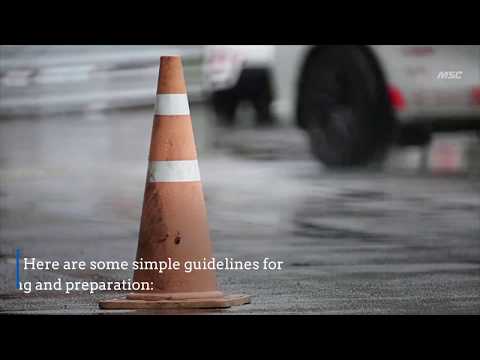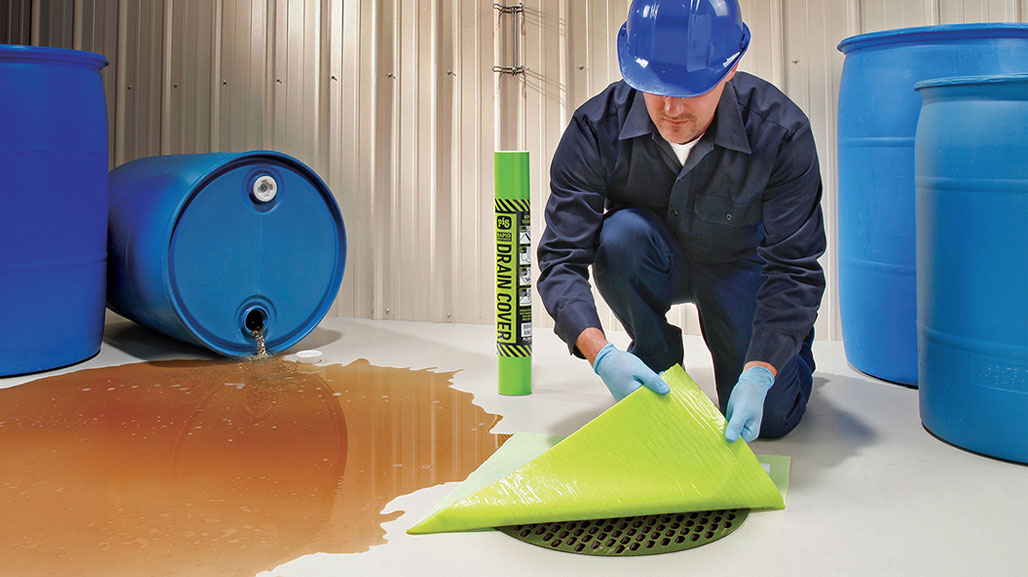
Use this checklist of best practices to prepare for hazardous weather conditions, including electrical storms, blizzards, tornadoes and hurricanes.
The Occupational Safety and Health Administration (OSHA) standard 1910.38 requires all employers to develop a written emergency action plan to protect their associates during any type of emergency, including bad weather.
“Having a plan in place before a severe storm hits is absolutely necessary to be able to respond effectively,” says Glenn Taylor, assistant regional administrator for compliance assistance programs in OSHA Region 7. “Employers can’t be complacent when it comes to these things because without good planning and preparation, injuries and illnesses can occur—and maybe even deaths.”
Emergency Preparedness Checklist for Weather Events
Prepare a Written Emergency Action Plan
“Proper planning prior to a severe weather emergency includes thinking ahead of time about what will be necessary to respond effectively to each possible scenario,” Taylor says. “For example, here in the Midwest, we have tornadoes, and along with those a lot of flooding occurs, as well as structural damage to manufacturing facilities from either a direct hit or high winds.”
Assign Emergency Response Roles
Emergency preparedness includes dividing up responsibilities among managers and employees with safety duties. Appoint someone to ensure that all electrical equipment is shut down before exiting the area.
Designate Emergency Exit Routes
The plan must include a way to account for all personnel during the emergency, and it should lay out the exit routes employees need to use to reach a designated assembly area or shelter-in-place location.
Designate Safe Spaces
The American Red Cross recommends preparing a “shelter-in-place” (SIP) location where associates, visitors and business partners can go if an emergency strikes suddenly. For tornado-prone locations, the emergency shelter might be below ground or in a room with no glass windows.
Install Emergency Alarm System
OSHA requires employers to develop an audible and possibly visible (strobe light) alarm system to notify workers when an emergency exists. Monitoring weather conditions daily is important for identifying the chance of severe weather ahead of time. Assign someone to sound the alarm to let workers know severe storms are on the way.
Install Landline Phone Service
Prior to a storm, the Red Cross recommends setting up a landline phone in the designated shelters or safe rooms because cell service could be disrupted.
Create Emergency Response Team Organizational Chart
An emergency response team organizational chart should specify the names or titles of all those who need to be contacted, both inside and outside the company, to collect and disseminate information about the emergency, Taylor says.
Inform Employees About the Emergency Action Plan
Initially, meet with all levels of managers and employees to educate them on the company’s EAP and the dangers posed by severe storms. Meet with all new associates to introduce them to the plan.
Schedule Regular Emergency Practice Training
Just like monthly fire drills in elementary school, the safety manager should run practice drills often enough so that associates automatically know where to go and what to do when the emergency alarm sounds.
“If the associates are not engaged in that process—and brought in to practice, practice, practice—in an emergency they won’t know how to respond appropriately, and management will be in disarray,” Taylor says.
Train Outdoor Workers in Lightning Safety
Brandon Hody, an industrial hygienist at Concurrent Technologies, recommends using the 30/30 rule for suspending and resuming work outdoors in a lightning storm.
“If it takes less than 30 seconds to hear thunder after seeing a flash of lightning, it is not safe to remain outdoors,” Hody says. “Then wait 30 minutes after the last flash of lightning appears before going back outside.”
Train Employees to Avoid Hazards After a Storm
Just because the severe weather is over does not mean all danger is past. According to the Federal Emergency Management Agency (FEMA), more accidental deaths occur in flash flooding following storms than from lightning strikes during storms. High winds also may have damaged buildings, which could collapse, and knocked down trees and utility poles, leading to power outages that may cause further deaths.
Provide Proper Personal Protective Gear and Training in Its Use
If associates are participating in post-storm cleanup, they may be exposed to flooding, heat waves, chemical or radiation exposure, biological hazards from sewage, or downed electrical wires. Employers must provide proper personal protective equipment, as well as instruction in safe practices and OSHA standards for operating in these hazardous conditions.
For more information on developing an emergency action plan, visit OSHA’s planning page.
Download The Checklist
Use this checklist of best practices to prepare for hazardous weather conditions, including electrical storms, blizzards, tornadoes and hurricanes.
Related Articles

Master Lock Pairs Bluetooth with Padlocks to Boost Workplace Security

Out in the Cold: Tips for Staying Safe

7 Highest Spill Risks at Machine Shops, According to Data

VIDEO: WypAll® X60 Cloth Demo Video: Cross-Contamination (Microfiber)


